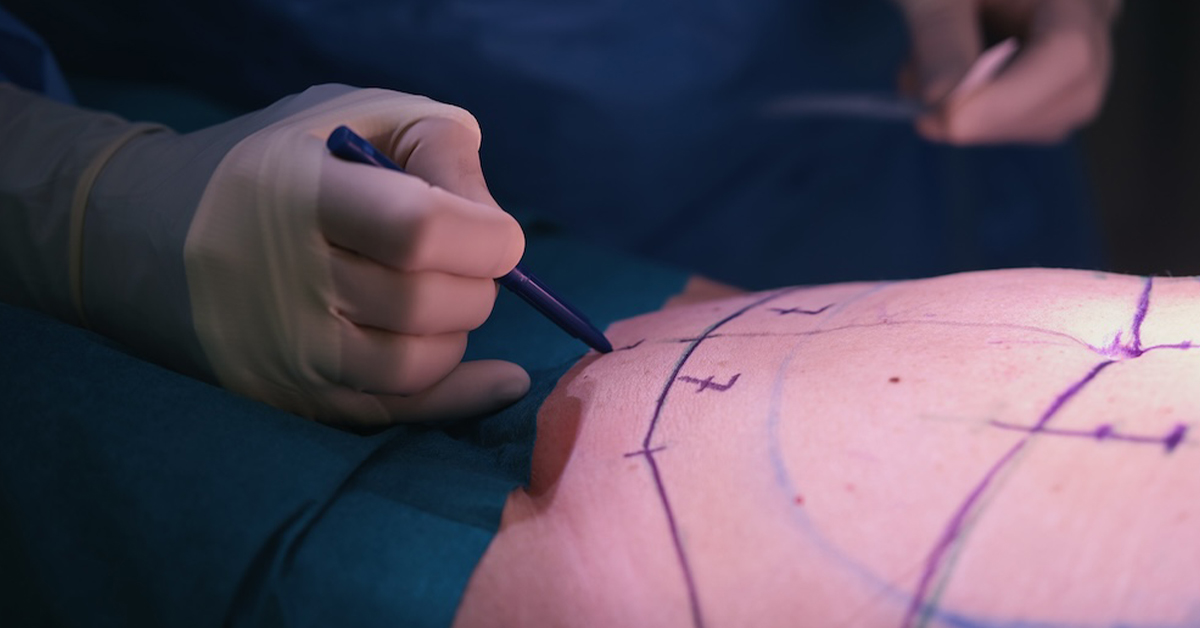How to Reduce Breast Size? Surgical and Non-Surgical Methods
Are excessively large breasts causing physical discomfort or emotional distress? Do you struggle to find clothes that fit well and feel confident? If you’ve been searching for ways to reduce your breast size, you’re not alone. Many individuals seek effective solutions to alleviate the challenges associated with having disproportionately large breasts.
To reduce breast size, both surgical and non-surgical methods are available. Non-surgical options include weight loss through a healthy diet and exercise, although this may not work for everyone due to the composition of breasts containing both fatty and fibrous tissue.
Non-surgical methods like wearing supportive bras or using minimizer bras can help alleviate discomfort but do not provide a permanent solution.
On the other hand, breast reduction surgery is a safe and effective way to significantly reduce breast size, alleviate physical discomfort, improve self-confidence, and reshape the breasts.
This surgical procedure involves removing excess breast tissue and skin to achieve the desired size reduction and lift the breasts for a more natural appearance.
We aim to offer valuable information that will assist you in making knowledgeable choices regarding your options. Thus, if you’ve been curious about how to effectively and safely reduce breast size, continue reading for insights.
Key Highlights
-
Breast reduction surgery and liposuction are surgical methods that can provide significant and long-lasting results for breast size reduction.
-
Non-invasive techniques may offer temporary relief but may not provide substantial reduction in breast size.
-
Weight loss through a healthy diet and exercise can help reduce fatty tissue in the breasts, but it may not work for everyone.
-
Compression garments and natural remedies can offer some relief from discomfort, but their effectiveness in reducing breast size is limited.
-
Consulting with a qualified plastic surgeon is essential to determine the most appropriate method for breast size reduction based on individual goals and concerns.
Surgical Methods for Breast Reduction
Breast reduction surgery, also known as reduction mammaplasty, is a surgical procedure performed by a board-certified plastic surgeon. It is a cosmetic surgery aimed at reducing the size of excessively large breasts to alleviate physical discomfort and improve overall well-being. The surgery involves removing excess breast tissue, reshaping the breasts, and lifting the nipples and areolas.
The procedure is typically performed under general anesthesia in a hospital or surgical center. The plastic surgeon utilizes various surgical instruments and techniques, including liposuction, to achieve the desired results. During the surgery, incisions are made, excess tissue is removed, and the remaining breast tissue is reshaped to create a more proportionate appearance.
After the surgery, patients are closely monitored in a recovery room to ensure their well-being. Post-operative care is crucial for optimal healing and involves following the plastic surgeon’s instructions, which may include wearing compression garments, taking prescribed medications, and attending follow-up appointments.
One common concern after breast reduction surgery is the appearance of scars. However, scar treatment products can help minimize the visibility of scars over time, improving the overall aesthetic outcome of the procedure.
Breast reduction surgery is a highly effective and safe procedure that can provide significant relief for individuals with disproportionately large breasts. It is important to consult with a board-certified plastic surgeon to discuss your goals, expectations, and potential risks before undergoing this surgical method for breast reduction.
Benefits and Considerations of Breast Reduction Surgery
Breast reduction surgery offers several benefits, including alleviating physical discomfort, improving self-confidence, and enhancing overall quality of life. If you are considering breast reduction surgery, it is important to schedule a consultation with a board-certified plastic surgeon.
During this consultation, you can discuss your goals and expectations, as well as the potential risks and benefits of the procedure.
Recovery time for breast reduction surgery may vary depending on the individual, but most patients can expect to return to work within a week. It is advisable to follow your surgeon’s post-operative instructions, which may include wearing a support bra and avoiding strenuous activities during the recovery period.
Scar management after breast reduction is an important consideration for many patients. Your surgeon can provide recommendations for scar treatment products and techniques to help minimize scarring and promote optimal healing.
Insurance coverage for breast reduction varies, so it is crucial to check with your individual insurance provider to determine if the procedure is covered and what documentation may be required. Some insurance plans may require evidence of medical necessity, such as documentation of physical discomfort or other related health issues.
| Benefit | Consideration |
|---|---|
| Alleviates physical discomfort | Varying recovery times |
| Improves self-confidence | Before and after photos |
| Enhances quality of life | Scar management techniques |
| Insurance coverage variability |
Weight Loss and Diet for Breast Reduction
When it comes to reducing breast size, weight loss through a proper diet and exercise plan can be a potential solution. By targeting overall weight loss, individuals with excess weight and fatty tissue in the breasts may experience a reduction in breast size.
However, it’s crucial to understand that focusing solely on breast reduction through weight loss is not advisable. The impact of weight loss on breast size varies depending on factors such as genetics, estrogen levels, and body composition.
Diet and exercise play a significant role in weight loss, which can contribute to overall wellbeing and improve health. However, it’s important to note that breast reduction is not a direct outcome of diet and exercise alone.
Nevertheless, maintaining a healthy body mass index (BMI) and reducing body fat percentage can potentially lead to a reduction in breast size as well.
Estrogen, a hormone that affects breast tissue growth, is one of the key factors in determining breast size. While weight loss can help lower estrogen levels in the body, the impact on breast size may not be predictable or significant for everyone.
Additionally, genetics also play a role in determining breast size, meaning that not all individuals will experience a significant reduction in breast size through weight loss alone.
It’s also essential to approach weight loss and dieting for breast reduction with caution. Rapid and excessive weight loss can have adverse effects on overall health and may lead to muscle loss instead of significant decreases in breast size. It’s recommended to maintain a balanced, nutritious diet and incorporate regular exercise, targeting overall weight loss rather than solely focusing on breast reduction.
Factors Impacting Breast Size
When considering weight loss for breast reduction, it’s crucial to be aware of the various factors that impact breast size. These factors include:
-
Genetics: The genes you inherit from your parents can play a significant role in determining your breast size and shape.
-
Estrogen levels: As mentioned earlier, estrogen, a hormone produced by the body, can affect breast tissue growth and development.
-
Body composition: The ratio of fat to muscle in your body can influence breast size. Higher body fat percentage can contribute to larger breasts.
Understanding these factors can help set realistic expectations when it comes to weight loss and its potential impact on breast size. While weight loss can lead to a reduction in breast size for some individuals, it may not be the primary factor for others.
It’s important to consult with a healthcare professional or a board-certified plastic surgeon to discuss your specific goals and explore the most suitable options for breast size reduction.
Non-Surgical Methods for Breast Reduction
While non-surgical methods may not provide significant reduction in breast size, they can offer some relief from symptoms. Compression garments are designed to provide support to the breasts and alleviate discomfort caused by their size.
Additionally, some individuals have explored natural remedies and alternative medicine as potential solutions for breast reduction. Herbal supplements, known for their potential weight loss and fat metabolism benefits, have gained attention in this context.
It is essential, however, to exercise caution when considering these methods and consult with a healthcare professional before trying any alternative treatments.
Compression garments can be worn daily to provide support and help alleviate discomfort associated with large breasts. While they do not actually reduce breast size, they can offer temporary relief from symptoms.
It’s important to note that these non-surgical methods offer more of a temporary solution and may not produce significant long-term reduction in breast size. For those seeking more substantial and long-lasting results, surgical options such as breast reduction surgery should be considered.
| Non-surgical Methods | Benefits | Considerations |
|---|---|---|
| Compression garments for breasts | – Provides support and alleviates discomfort – Temporary relief from symptoms |
– Does not produce significant long-term reduction – Not a permanent solution |
| Natural remedies | – May assist with weight loss and fat metabolism | – Limited scientific evidence – Consult with a healthcare professional before trying |
| Alternative medicine | – Potential benefits for weight loss and fat metabolism | – Varied effectiveness – Caution and professional advice required |
Conclusion
Whether you’re seeking breast minimization, bust reduction, breast shrinkage, chest reduction, or simply smaller breasts, there are options available to help you achieve your goals. While non-surgical methods such as wearing supportive bras or utilizing compression garments can provide temporary relief from physical discomfort, they may not offer significant and long-lasting results. Surgical methods, such as breast reduction surgery, are considered the most effective solution for individuals with disproportionately large breasts.
By consulting with a qualified plastic surgeon, you can discuss your individual goals and concerns to determine the most appropriate method for breast size reduction. Whether you choose non-surgical or surgical options, taking the time to weigh the benefits and considerations is crucial in making an informed decision that will improve your overall quality of life.
Remember, reducing breast size is not solely about aesthetics, but also about alleviating physical discomfort and enhancing your psychological well-being. Embrace the opportunity to reclaim your confidence, comfort, and body image with the assistance of a trusted plastic surgeon.
Frequently Asked Questions
Non-surgical options include weight loss through diet and exercise, wearing supportive or minimizer bras, using compression garments, and exploring natural remedies. However, these methods may provide temporary relief and are unlikely to result in significant long-term reduction in breast size.
Breast reduction surgery, or reduction mammaplasty, is a safe and effective way to significantly reduce breast size, alleviate physical discomfort, and reshape the breasts for a more natural appearance. It involves removing excess breast tissue and skin under general anesthesia.
Recovery times can vary, but most patients return to work within a week. Post-operative care includes wearing compression garments, taking prescribed medications, avoiding strenuous activities, and attending follow-up appointments. Scar management is also a crucial aspect of recovery.
Insurance coverage varies by provider and plan. Some insurance plans may cover breast reduction surgery if it’s deemed medically necessary, which usually requires documentation of physical discomfort or related health issues. It’s important to check with your insurance provider.
While weight loss through a healthy diet and regular exercise can help reduce fatty tissue in the breasts, it may not significantly reduce breast size for everyone due to the composition of breasts and individual factors like genetics and estrogen levels.
Breast Reduction in Miami, FL
To begin your Breast Reduction journey in Miami, the first step is to arrange a consultation with our expert team. For more information about the procedure, please feel free to contact us at (305) 406-9055 or schedule your consultation online at your convenience. Our team of experienced professionals is here to assist you every step of the way and answer any questions you may have.








